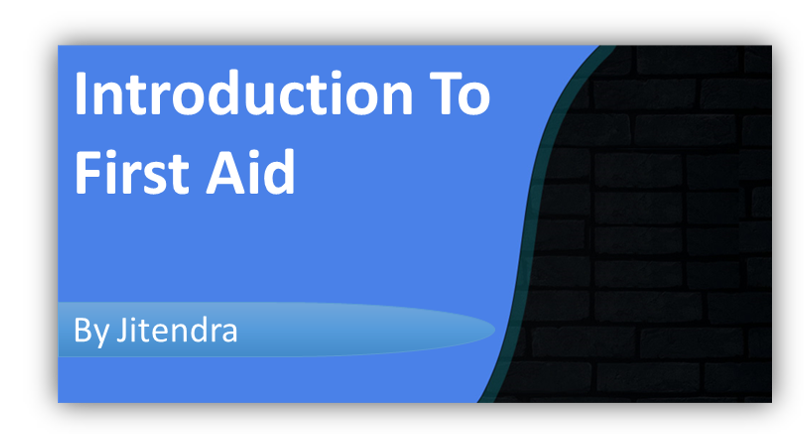Definition
First aid is the immediate care given to a person who has been injured or suddenly taken ill. It includes home care if medical assistance is not available or delayed. It also includes well selected words of encouragement, evidence of willingness to help, and promotion of confidence by demonstration of competence.
Reasons for First Aid giving
- To sustain (preserve) life.
E.g. mouth to mouth respiration when breathing has stopped. - To prevent worsening of the problem (complication).
E.g. Immobilizing the fractured bone. - To promote healing and recovery.
e.g., reassure the patient, relief pain, protect from cold and arrange patient transfer.
General directions to give first aid
Responsibility of a first aider in the management of casualty:
- Assessment of the situation
- Identify the problem.
- Giving immediate and adequate treatment, bearing in mind that a casualty may have more than one injury and that some casualties will require more urgent attention than others (to give priority).
- Arrangement for the transport of casualty according to the seriousness of his/her condition without delay accompanied with brief written report.
- Prevent cross infection.
Assessment
- Be calm, take charge and be confident
- Talk, listen and reassure the conscious casualty
- Check safety of casualty and of yourself and check for breathing, bleeding and level of consciousness.
- Get others to help.
 Assessing a casualty
Assessing a casualty
Problem identification (Diagnosis)
The history of the incident must be taken in to consideration and an examination made to determine the signs and symptoms and level of consciousness.
- The causality ( e.g. I slipped and fall down)
- A witness or a bystander(s) whether he/she saw the happenings Points to be considered during history taking.
- Sensations and feelings that are described by the casualty.
E.g.
• I feel pain
• I feel cold
• My arm is numb - Variations from normal ascertained by the first- aider.
Level of consciousness
Recognition of any change of level of consciousness is important.
- Full consciousness- the casualty is able to speak and answer questions normally
- Drowsiness- the casualty is easily aroused but lapses in to unconscious state
- Stupor –the casualty can be roused with difficulty, aware of painful stimuli.
E.g. pin prick, but not of other external elements like being spoken to. - Coma – cannot be roused by any stimuli.
In general make full use of your senses to obtain maximum information (Look, smell, listen and touch).
